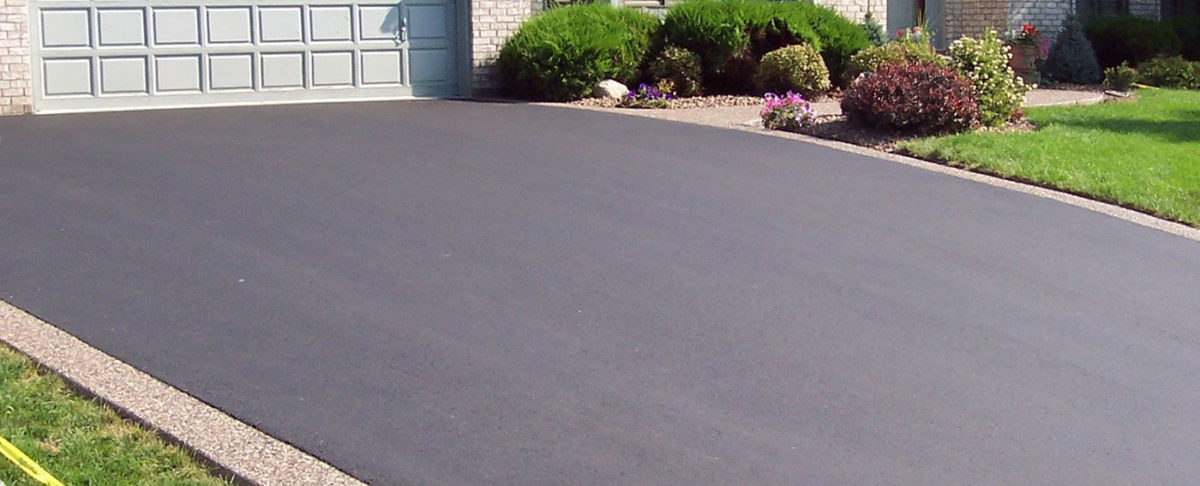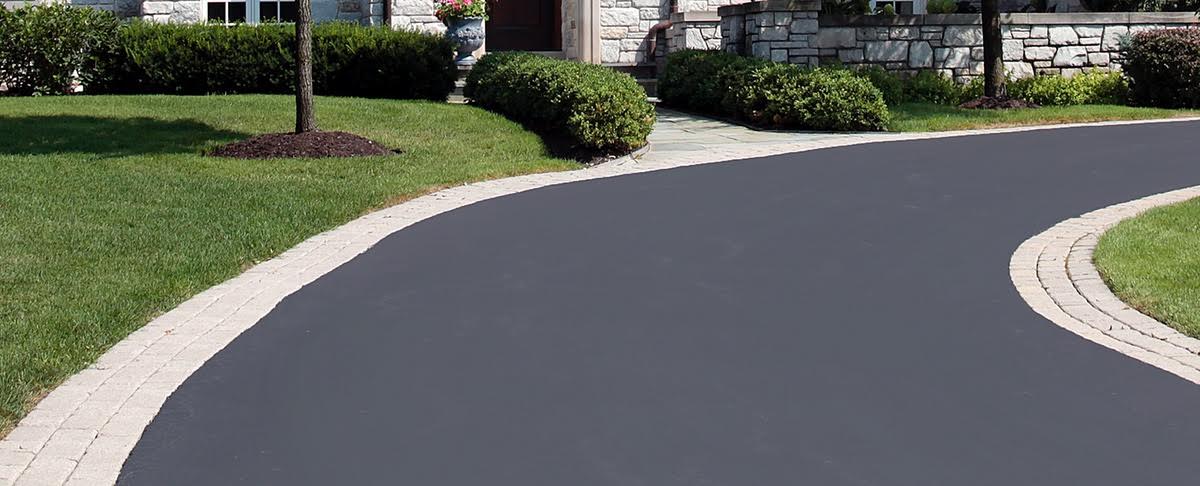We turn to asphalt driveways for a wide variety of reasons. First, they’re affordable, and you can drive on them in as little as 24 hours after laying. Your asphalt driveway edge maintenance may differ from your neighbors, but they’re all equally as important.
Maintaining your driveway and ensuring that your asphalt is not spilling over into your yard is a necessary part of having one of these driveways. You’ll want to understand how vital edge relief is to the durability and longevity of your driveway.
In this article, we want to help you understand what edging an asphalt driveway means and why it’s an integral part of your yard maintenance.
What Does It Mean to Edge an Asphalt Driveway?
Edging your driveway refers to the process of securing the sides of the driveway to prevent cracks and damage. Since asphalt sits on the top of the soil and does not get built into the foundation of your yard, there are some extra requirements needed to keep everything in ship shape.
You’ll notice that most asphalt driveways have a 45-degree grading on the edges. This is to help transfer stress from the asphalt to the solid ground beneath it. Your driveway must have this; otherwise, the pressure from driving over the asphalt every day will cause the edges to crack.
While this might be a necessity, it isn’t always too appealing if you don’t have something complementing the edge of your asphalt driveway. This point is where many people turn towards landscaping and hardscaping materials like rocks to clean up the edges while still allowing them to serve their purpose.
Why is Asphalt Edging Important?
Edging is essential because it serves two primary purposes. First, the grading of the driveway exists to take pressure away from the asphalt. Without grading, your driveway edges would start to crack from the weight of vehicles driving over them.
The second reason is aesthetics. If you add landscaping stone to the edges of your driveway, you’re able to clean up the grading while still preventing visitors from driving into your yard because they can’t acknowledge the edge of the driveway.
What many homeowners do is add topsoil that reaches the surface of the driveway, so everything looks cohesive. When you don’t do this, you’ll have a driveway that sits above the rest of your yard, and while it doesn’t look bad, it’s not ideal for most.
Consider adding that layer of topsoil so you can enhance the entire appearance of your driveway.
Asphalt vs. Concrete Driveway Edges
If we take a look at both of these types of driveways, we can begin to understand the importance of asphalt driveway edge support. These two types of materials require a completely different edge.
Asphalt needs that 45-degree grading to ensure that the pressure doesn’t crack the blacktop. On the other end, concrete doesn’t require this and usually has straight and crisp edges.
This change of appearance is due to the method of installation for both of these materials. When installing concrete, professionals use rectangular forms when they pour the concrete in. The end result is a straight vertical line of concrete that doesn’t always require edging.
When installing asphalt, professionals use a paving machine, so they don’t have the same amount of control over the edges of the asphalt.
Both asphalt and concrete can crack, and luckily asphalt is much easier to patch and repair. Either way, if you don’t have proper edges on your driveway, it will continue to crack, no matter how many times you repair it.
Consider Building a Driveway Border
You might want to do some landscaping after asphalt driveway installation is over. This is a great way to protect your driveway edges and ensure you don’t have to worry about cracking or damage.
One great solution to your problem is building a driveway border using a stone or Belgian block. These are rough-cut rectangles made of stone, and they do a great job at securing a border around your driveway. They can help prevent a variety of problems:
- Driveway cracks
- Cars driving in the grass
- Damage to your landscaping
If you choose to use a driveway border for your asphalt driveway edge support, there is a bit of work involved.
You’ll have to excavate an eight-inch deep edge along your driveway, clean the edges with a chisel and a sledgehammer, and stake the line to make sure everything lines up correctly.
If you’re choosing Belgian block to edge your driveway, they come in a variety of different colors and sizes. Make sure you choose the right size for your unique situation.
Use a Premium Driveway Edging Restraint
If you’ve ever wondered how some people get that perfectly beautiful straight edge on their asphalt driveways, we have the answer for you.
The AsphaltEdge is a flexible L-shaped aluminum restraint that helps you get a uniform edge on your driveway or sidewalk.
These tools install quickly and easily to allow you to get a finished look every time. Now, that all sounds great, but why should you bother using one of these tools at your home?
Here are a few reasons:
- It helps extend the life of your asphalt by preventing broken edges
- It offers uniform thickness throughout the blacktop
- This tool is one of a kind for installation along an asphalt border
- The tool works with all types of asphalt in all applications
- AsphaltEdge qualifies for LEED points
This asphalt restraint is a quick and simple way to replicate the way they install concrete for the same type of results. You cannot have the asphalt raised using this as you would with concrete, but this works well so you can then fill in the sides of your driveway or walk with topsoil for a clean appearance.
How to Extend The Life Of Your Asphalt Driveway
The last thing you want to experience as a homeowner is a big expense going down the drain. You spend a lot of money on your driveway, so make sure you can protect it. Try not to drive too close to the edge of the driveway, especially if you don’t have any asphalt driveway edge support. This is where those blocks come into play.
It’s also important to keep your lawnmower and weed eater away from your driveway edges. Any chip or chunk removed from the driveway can create a weak spot that will lead to cracks and further damage down the road.
The edges of your driveway are the most critical areas because they’re difficult to repair. You can easily fix cracks in the center of your driveway or walk, but large portions and chunks missing are a bigger problem.
Remember that stress is the cause of damage to your driveway, so try not to park cars towards the edges and always make visitors aware of your new driveway so they can be courteous and act accordingly.
Asphalt Driveway Maintenance
One excellent method of maintaining and extending the life of your asphalt driveway is with a sealant. Sun, rain, snow, and thaws all wreak havoc on your driveway, and they dry out the binders that help keep everything together. The driveway will start to break down until it ultimately falls apart.
If you use a sealant on your driveway, it will extend it’s life while also granting you that attractive dark black appearance as well.
Another crucial preventive maintenance factor to keep in mind is oil spots. These pesky spots will eat away at the binders that keep your driveway together, and next thing you know, your driveway is flaking and falling apart.
You want to use a commercial-grade degreaser with a scrub brush and plenty of water. You’ll likely have to run through this process a few times to get all the spots, but it’s worth protecting your driveway in the long-run. Make sure you rinse off all the degreaser as well.
The last question you might have regarding asphalt is whether or not to use ice melt on your new driveway. The good news is, these products don’t harm asphalt, so you can use them as much as you need to prevent slipping and sliding this winter.
We only recommend that you spray your driveway down a few times over the winter because ice melt can stain your blacktop, which gives it a dusty white appearance.
Edge Your Asphalt Driveway
By now, you should understand what it means to edge asphalt driveway and why it’s an important component of yard maintenance. As we’ve said, you spend a good chunk of change on your driveway, so you should do everything you can to protect it.
Make sure you hire a reputable company to install your asphalt driveway, so you know you’re getting the best of the best.





